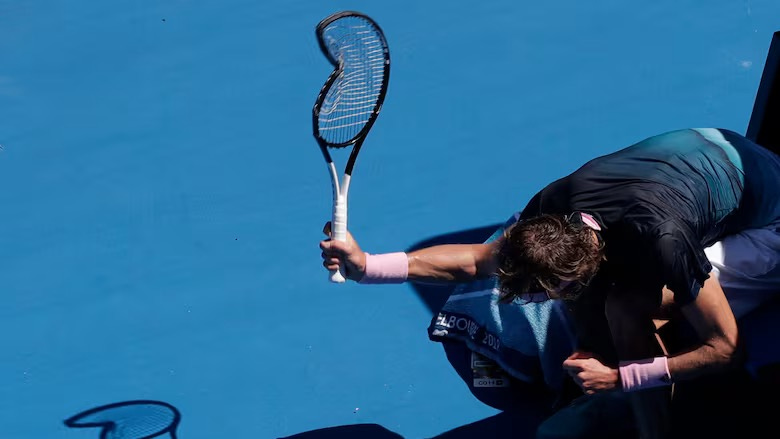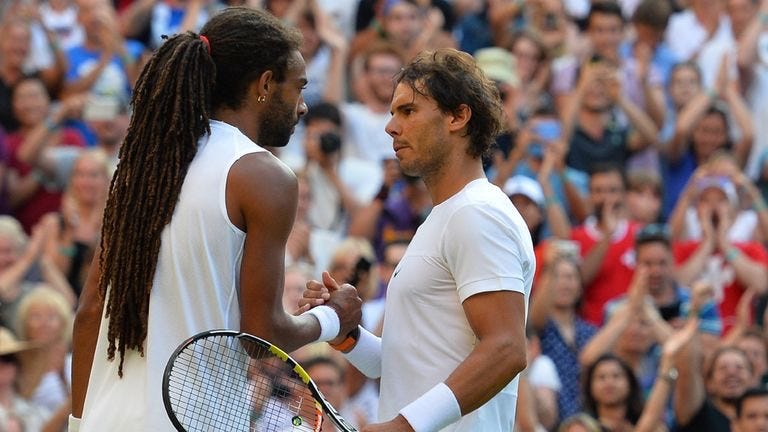Carlos Alcaraz, the highest ranked men’s tennis player in 2022, the winner of Wimbledon and the US Open made $10 million dollars last year! Carlos makes the same as the bench warmer of the Wizards, the 146th best player in the NBA. You might be wondering why I should be making such a big racket about this? Well how does the 146th best tennis player compare? Emilio Nava, the 146th ranked men’s tennis player as of October 11, 2023, has made $546,940 in prize money over the span of his 3 year career. While this is a significant amount of money, he must personally fund for his air fare, his coach, hotel fees, physical therapy, training and almost every other expense that would typically be covered by a team or organization. But even then, the money he earns is not promised. What if Emilio gets injured? What if he simply is out of form for a few months? If someone is one of the 150 best tennis players in the entire world, shouldn't they have a secure income? From the likes of Emilio Nava and Carlos Alcaraz, financial insecurity is too common among tennis players and must be addressed in order to allow these athletes to be properly compensated.
Let’s break this system down. We will start at the baseline and explore the structure of professional tennis, then we will take a look at the state of tennis now and where it's hitting the ball out and lastly, we will decide on what steps the governing bodies of tennis should make next to hit an ace.
In football, the only thing managing it is the NFL. The NFL plans and schedules the games, has minimum salaries for the players and pays coaches and travel fees. However, tennis is unique because, as I alluded to earlier, unlike other sports, there is not one organization or league that controls the players and tournaments and pays for these expenses. In tennis, there’s the ATP, the men’s tour, the WTA, the women’s tour, the grand slams, which are the biggest tournaments of the year and the international tennis federation, which is the international governing body of tennis that covers events such as the Olympics.
This disjointed structure leads to increased efficiencies in profit making, especially in relation to other sports. Furthermore, within the multiple tennis organizations, only about 18% of the revenue is being shared with the players whereas other sports organizations like the Premier league and the NHL share roughly 50% according to the Professional Tennis Association. Since tennis is not a team sport, it would make sense that the revenue being shared with the talent is even higher because these individuals, player A and player B, are the sole reason anyone is making a profit.
This leads to most professional tennis players not being able to make ends meet. For instance, Dustin Brown, a player who reached a career high of 64th in the world and beat Rafael Nadal, arguably one of the greatest players of all time, at Wimbledon, the most prestigious tennis tournament, was living in his car during parts of his career and strung other player’s rackets in order to make enough each week. In fact, sometimes he would make more from stringing rackets than from the tournament’s prize money.
Making this even worse is the 11 and a half month long season which takes place literally all across the globe. In just a month, a player may need to go from India to Australia to Texas and each player gets no financial support to cover any of these travel fees. These high cost demands hurt player Kiranpal Pannu who earned roughly $7,000 in prize money, but spent a whopping $34,500 in travel expenses according to ESPN.
Therefore, becoming a tennis player is a gamble. Only if one has a royal flush can they make a livable wage, making tennis to be almost completely inaccessible for anyone who does not come from a wealthy family that can help support them.
Somehow though, Serena and Venus Williams, two sisters who grew up in Compton California with little to no access to formal training, were able to become two of the most successful women in tennis winning 23 grand slams, 4 gold medals and over 100 million dollars in prize money. Serena and Venus did so largely through their father, Richard, who had his eye set on one prize: his daughters becoming world number 1. He gave up everything so they could succeed. Serena and Venus are a very rare case, however. Most individuals, especially those from low income families, are never given the opportunity to excel at tennis. And if they do make it pro, only if they are once in a lifetime talents can they sustain life on the tennis tour. The extent Richard went for Venus and Serena cannot be the norm. Tennis must become a more accessible and player-focused sport.
Three years ago, tennis players Novak Djokovic and Vasek Pospisil announced the creation of the Professional Tennis Players Association or the PTPA. Although not a union because players are not employees of the ATP tour, it acts similarly to one with its mission being to “promote, protect and represent the interests of its players.” Unfortunately, the association was originally met with criticism and in the two years following the association’s creation, little change was brought to the tennis community. But, in the past year they have made significant progress by giving professional players of all ranks a team-like community through dedicated means of communication at tournaments. They hear from over a hundred players at major tournaments with concerns regarding match scheduling and tournament hotels and also listen to the player’s worries about other parts of tennis, like the pay.
The PTPA have demanded a change in the pay structure of tennis contributing to the ATP’s creation of its initiative “Baseline.” Baseline guarantees a minimum income for the top 250 men’s singles players. The base income for the top 100 is $300,000 and lower for those outside of it. While this is a great step forward, the base income must be higher because the only way to make money in tennis is by spending it. Spending it on better training so one can improve and win their matches, but also spending more on flights so players can actually participate in tournaments and have the opportunity to increase their earnings. This is especially important for the lower ranked players as they need this the most since their tournaments award less price money.
This secured paycheck will help players have more financial freedom, but the best way to ensure players make enough money is by tournaments subsidizing the players' travel and hotel fees. Limiting these financial burdens on the players will allow more of them to have the means to continue playing professionally and refocus their money on their training – benefiting them in the long run. Most tournaments have the means to do this. The US Open for instance makes more than 150 million dollars in ticket revenue alone. And for the tournaments that may not afford all of these expenses due to a lack of ticket revenue, a few steps can be taken to make the event more popular.
First, men’s and women’s tournaments should combine. While this may be surprising to those unfamiliar with the sport, it’s common for men and women to be playing in completely different countries each week. By merging the two, tournaments can see two different groups of fans seek the same event, hence filling more seats.
Secondly, the sport needs to appeal to younger fans. I love watching tennis but very few of my peers have any interest in the sport – and they aren’t the only ones. According to Play Today only 14% of tennis viewers are under the age of 18. The lack of young fans is a result of the overall unpleasant viewing experience bringing me to my final point:
Tennis needs to make the viewing experience itself more appealing. During matches, everyone must stay seated and silent for almost the entire time. This is excruciating for youth fans and also many adults. But, it does not have to be this way as many players, including American Chris Eubanks, have stated the noise does not bother them while playing. Even then, tennis organizations can begin hosting more exhibition events that players do not take as seriously. These events can be purely social and allow more of the audience to have fun while bringing more attention to the sport and its players.
At the beginning of this essay, we started at love: the structure of professional tennis. Then, we looked at the state of tennis now and where it is failing and lastly we decided on what steps the governing bodies of tennis should take next to hit a winner. These changes can make tennis a more profitable, engaging and player based sport. And most importantly, players like Emilio Nava, Dustin Brown and Kiranpal Pannu can make enough money to live their dreams as a tennis player.





